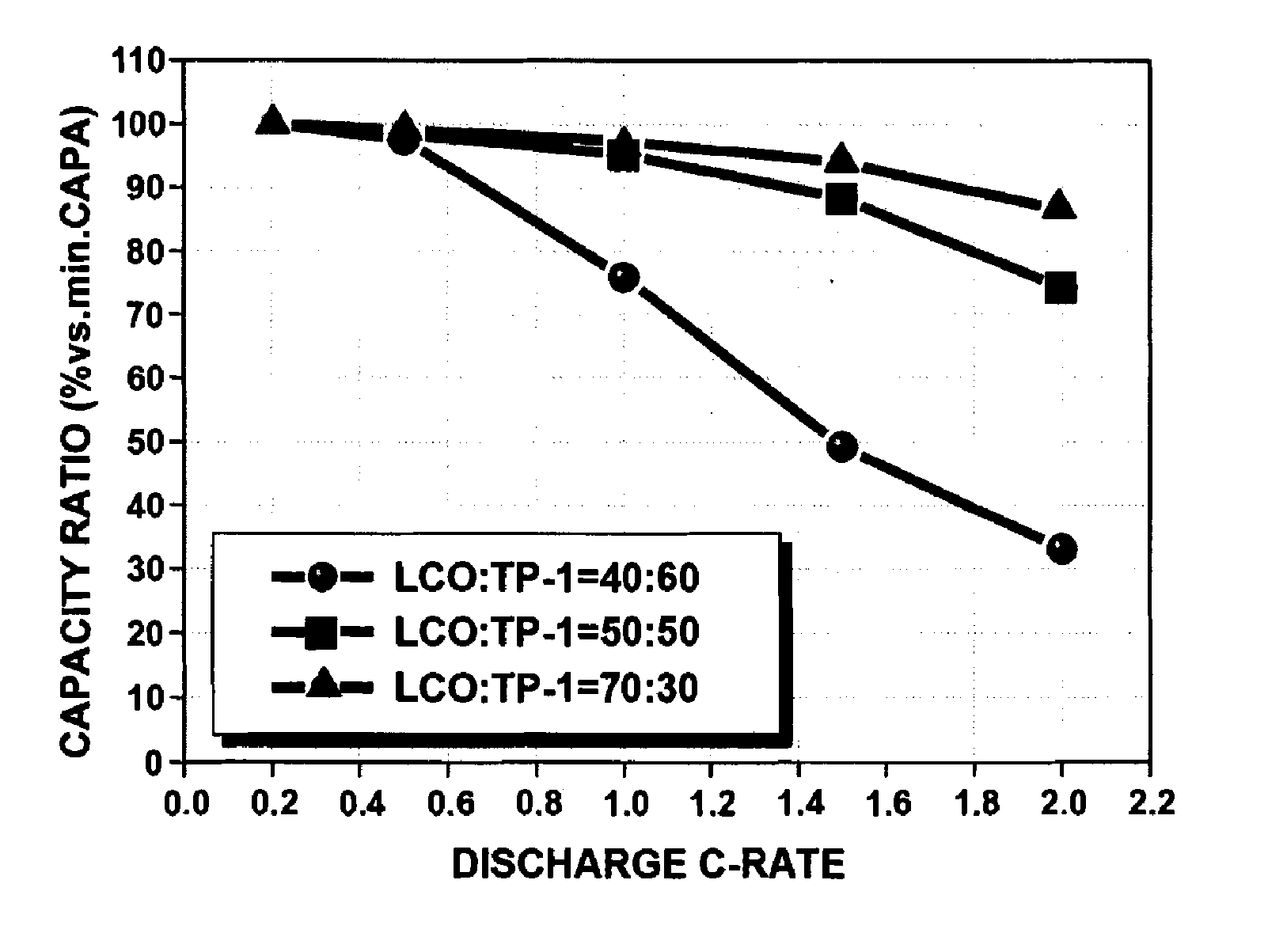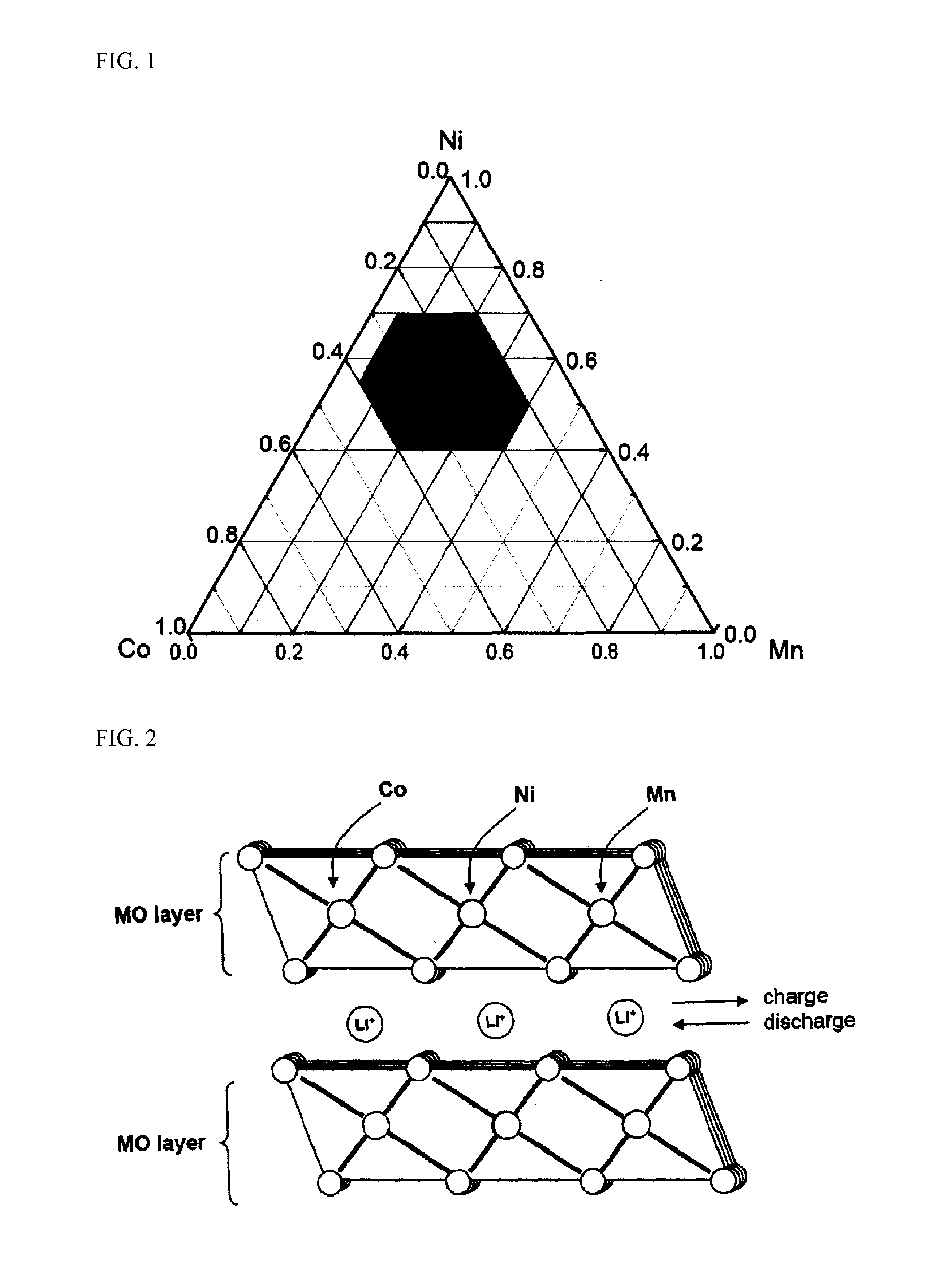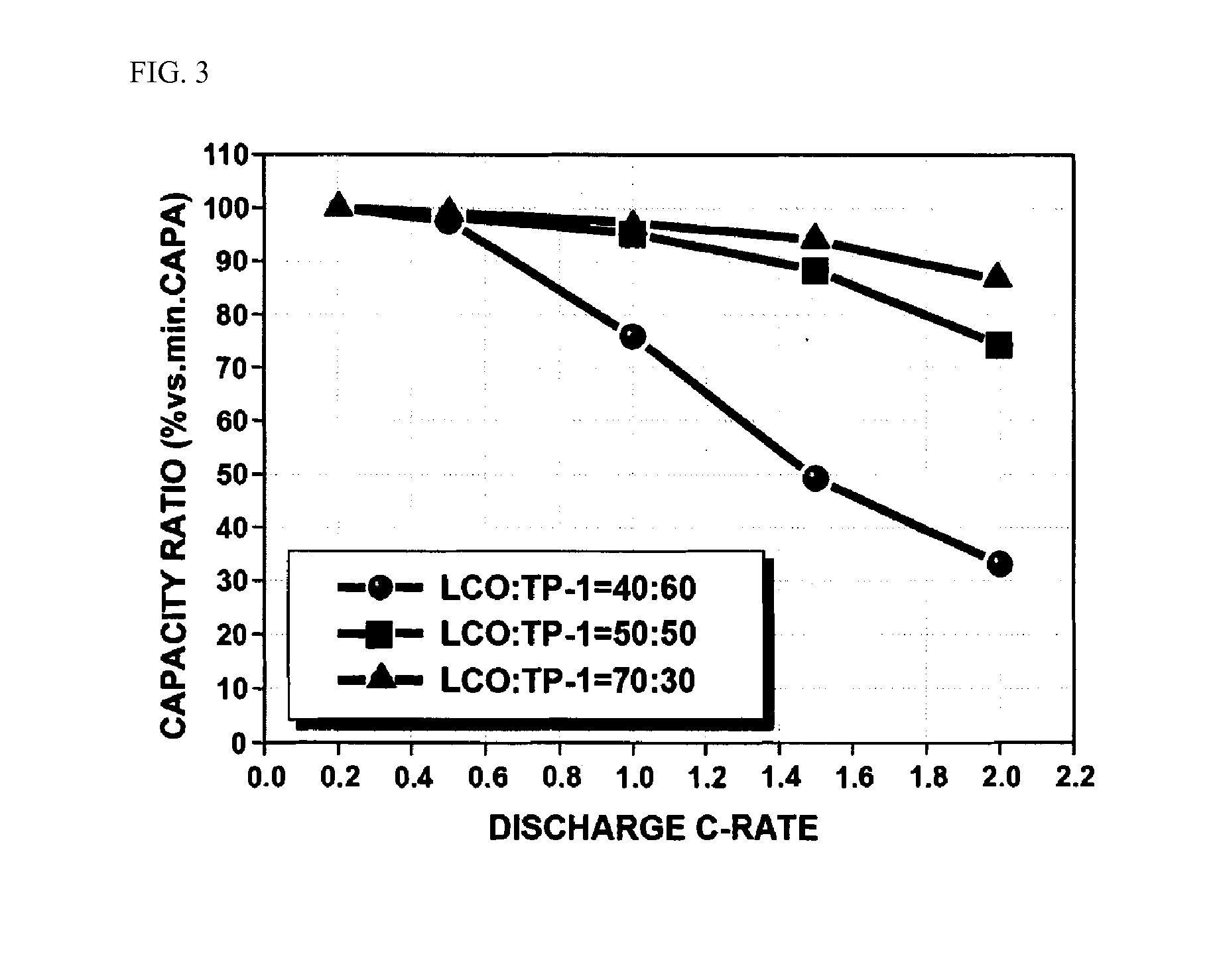Lithium secondary battery containing cathode materials having high energy density and organic/inorganic composite porous membrane
a secondary battery and cathode material technology, applied in the field of lithium secondary batteries comprising cathode materials with high energy density and organic/inorganic composite porous membranes, can solve the problems of disadvantage, licoosub>2 /sub>, and relatively high cos
- Summary
- Abstract
- Description
- Claims
- Application Information
AI Technical Summary
Benefits of technology
Problems solved by technology
Method used
Image
Examples
example 1
[0137]LiCoO2 having a monolithic structure and D50 of about 15 to about 20 μm and LiNi0.53CO0.2Mn0.27O2 having D50 of about 5 to 8 μm, as an agglomerate of micro particles a size of about 1 to about 2 μm obtained in Preparation Example 1-1 were mixed at a ratio of 50:50 to prepare a cathode material mix.
[0138]The cathode material mix, Super P as a conductive material and polyvinylidene fluoride as a binder were mixed at a weight ratio 92:4:4, and N-methylpyrrolidone (NMP) was added thereto to prepare a slurry. The cathode slurry was applied to an aluminum collector, followed by drying in a vacuum oven at 120° C. to produce a cathode.
[0139]In addition, mesocarbon microbead (MCMB) as an anode active material, super P as a conductive material and PVdF as a binder were mixed at a weight ratio of 92:2:6, followed by dispersion in NMP and coating on a copper foil, to produce an anode.
[0140]An organic / inorganic composite porous membrane obtained in Preparation Example 1-2 was inserted betw...
example 2
[0141]A cathode material mix was prepared and a lithium secondary battery was produced in the same manner as in Example 1 except that a weight ratio of LiCoO2 and LiNi0.53Co0.2Mn0.27O2 in the cathode material mix was 70:30.
experimental example 1
[0146]In order to confirm effects associated with use of the cathode material mix, discharge capacity and cathode thickness of batteries obtained in Example 1 and Comparative Example 1 were measured. The results thus obtained are shown in Table 1.
TABLE 1Discharge capacityCathode thicknessEx. 1163.4 mAh3.727Comp. Ex. 1 152 mAh3.802
[0147]As can be seen from Table 1, the battery produced from, as a cathode active material, a cathode material mix of lithium cobalt oxide and lithium nickel-manganese-cobalt oxide, each having a predetermined composition, exhibited a discharge capacity increase of about 7% and a cathode thickness decrease of about 2%, as compared to a battery produced from only lithium cobalt oxide.
PUM
| Property | Measurement | Unit |
|---|---|---|
| size | aaaaa | aaaaa |
| molar ratio | aaaaa | aaaaa |
| total weight | aaaaa | aaaaa |
Abstract
Description
Claims
Application Information
 Login to View More
Login to View More - R&D
- Intellectual Property
- Life Sciences
- Materials
- Tech Scout
- Unparalleled Data Quality
- Higher Quality Content
- 60% Fewer Hallucinations
Browse by: Latest US Patents, China's latest patents, Technical Efficacy Thesaurus, Application Domain, Technology Topic, Popular Technical Reports.
© 2025 PatSnap. All rights reserved.Legal|Privacy policy|Modern Slavery Act Transparency Statement|Sitemap|About US| Contact US: help@patsnap.com



